How to Increase Ecommerce Sales: The Ultimate Cheat Sheet for Success

Imagine you’ve poured your heart and soul into your eCommerce store. You’ve curated a fantastic selection of products, your website looks sleek and professional, but… the sales aren’t rolling in. Frustrating, right? How to increase eCommerce sales?
Here’s the truth: in today’s jam-packed online marketplace, grabbing customers’ attention and converting them into loyal buyers requires more than just great products. It’s about creating an engaging experience that builds trust, ignites excitement, and ultimately compels them to click that “buy” button.
This guide is your roadmap to ecommerce success. We’ll delve into powerful strategies that transform website visitors into raving fans and boost your sales in 2024. From crafting irresistible product pages to optimizing the customer journey, you’ll discover actionable tips and tricks to turn your online store into a sales powerhouse.
But wait, there’s more! We’ll also expose critical pitfalls to avoid, ensuring you steer clear of common mistakes that can cause your sales to plateau.
How to increase eCommerce sales?
1. Show, Don't Just Tell: Powerful Image Strategies to Boost Sales
Gone are the days of static product images simply showcasing what an item looks like. In today’s competitive landscape, captivating product galleries are storytelling powerhouses.
Visuals are the cornerstone of any successful ecommerce store. They’re the first impression you make on potential customers, and they have the power to capture attention, ignite desire, and ultimately drive sales. But simply showcasing your products isn’t enough. You need to tell a compelling story with your images, highlighting the benefits and features that truly matter to your customers.
Here’s where a compelling image gallery comes in.

- Go beyond flatlays: Sure, a clean product shot on a white background is essential, but don’t stop there! Think lifestyle images. Show your sunglasses perched on someone’s face during a beach getaway, or your cozy blankets draped over a couch perfect for a movie night in. This helps customers envision themselves using and enjoying your products.
- Zoom in on the details: High-quality close-up shots allow customers to appreciate the finer points of your products. Is your watch crafted with intricate detailing? Does your clothing boast exceptional stitching? Close-ups let them experience that quality virtually.
- Embrace the 360 view: Technology is your friend! Offer 360-degree product views that allow customers to virtually rotate and examine your products from every angle. This transparency builds trust and reduces the chances of post-purchase surprises.
2. Pixel Perfection: The Power of High-Quality Images
There’s a reason why the saying goes, “A picture is worth a thousand words.” In the world of ecommerce, high-quality product images are more than just eye candy; they’re essential for building trust and driving sales.
- Invest in the best: Consider hiring a professional photographer to capture your products in a polished and professional light. If that’s not in your budget, invest in good quality camera equipment and learn basic product photography techniques.
- Consistency is key: Maintain consistent lighting, background, and editing style across all your product images. This creates a cohesive brand experience and makes your website appear more professional.
- Ditch the duds: Avoid blurry, pixelated, or poorly-lit photos. These can make even the most amazing product look cheap and unappealing. Remember, first impressions matter!
High-quality images showcase the craftsmanship, details, and functionality of your products, giving customers the confidence they need to click “add to cart.”
3. Fear of Missing Out: The Power of Scarcity
Let’s face it, a little healthy dose of FOMO (Fear of Missing Out) can be a powerful motivator. By strategically highlighting limited availability, you can nudge customers towards making a purchase decision faster.

- Countdown to conversion: Running a flash sale? Have limited edition products? Leverage countdown timers to create a sense of urgency. These visual cues subtly remind customers that the opportunity to snag this amazing deal won’t last forever.
- Scarcity signals: Letting customers know there’s only a handful of a particular item left in stock can create a sense of exclusivity and desirability. This can be particularly effective for high-demand products.
Remember: Don’t overdo it. Constant FOMO tactics can backfire and come across as inauthentic. Use scarcity strategically for maximum impact.
4. Trust Signals: Building Confidence with Trust Badges

Imagine walking into a store with no security cameras, locked doors, or any indication that your purchase is safe. Wouldn’t you feel a little uneasy? The same applies to online shopping. Trust badges are a simple yet powerful way to build confidence and encourage customers to complete their purchases.
- Partner with reputable payment gateways: Integrate logos from trusted payment processors like PayPal or Stripe on your website. This reassures customers that their financial information is secure when they shop with you.
- Showcase customer testimonials and reviews: Display positive customer reviews and testimonials prominently on your product pages. Seeing positive experiences from others can significantly influence buying decisions.
By incorporating trust badges, you’re sending a clear message to your customers: “We take security and customer satisfaction seriously.”
5. Comparison is Key: Making Informed Decisions Easy
Empower your customers to make informed decisions by allowing them to easily compare similar products side-by-side. This transparency builds trust and simplifies the buying process.

- Comparison charts: Create clear and concise charts that showcase key product specifications for similar items. This allows customers to quickly identify which features matter most to them and choose the product that best suits their needs.
- Filter magic: Implement product filtering options based on various criteria like price, brand, color, size, or features. This allows customers to narrow down their search efficiently and find the perfect product faster.
By providing these comparison tools, you’re not pressuring customers, you’re giving them the information they need to feel confident in their purchase decision.
6. The Art of Persuasion: Balancing Features and Benefits
Compelling product descriptions are a cornerstone of successful ecommerce. But it’s not just about listing features. The key lies in striking a balance between features and the benefits those features offer to your customers.
- Speak their language: Use clear, concise, and persuasive language that resonates with your target audience. Avoid technical jargon and focus on the benefits your products offer in everyday language.
- Benefits over brags: Don’t just list features, explain how those features improve the customer’s life. For example, instead of simply stating “water-resistant jacket,” highlight how it “keeps you dry during unexpected showers.”
- Emotional connection: Consider incorporating emotional triggers in your copywriting. Will this product make them feel confident, stylish, or adventurous? Tap into those emotions to create a deeper connection with potential customers.
By focusing on the “why” behind the features, you’ll craft compelling product descriptions that not only inform but also persuade customers to make a purchase.
7. The Power of Motion: Captivating Customers with Product Videos
In today’s fast-paced world, attention spans are shorter than ever. That’s where product videos come in. Videos can significantly boost engagement and conversion rates by showcasing your products in a dynamic and informative way.

- Keep it concise and informative: Don’t bombard viewers with long, drawn-out videos. Aim for short, informative clips that highlight key features, functionality, and benefits of your products.
- High-quality visuals and audio: Invest in good quality audio and video equipment to ensure a professional viewing experience. Shaky footage and muffled audio can have the opposite effect of what you’re aiming for.
- Highlight different aspects: Consider creating a variety of video content, such as product demos, customer testimonials, or “behind-the-scenes” glimpses into your brand story.
Product videos can be a powerful tool to educate, entertain, and ultimately convince customers to take the plunge and buy.
8. Bridging the Gap: Video Calls for High-Priced Products
For high-priced items, that extra layer of reassurance can be the tipping point for a customer on the fence. Video calls offer a unique opportunity to bridge the gap between the online and offline shopping experience.
- Live demos: Offer live video demonstrations of complex products or those with intricate features. This allows customers to ask questions in real-time and get a personalized product walkthrough.
- Virtual consultations: Schedule video consultations with your sales team for high-value purchases. This allows for a more in-depth conversation about the customer’s needs and how your product can fulfill them.
Remember: Well-trained and knowledgeable staff are key to successful video consultations. Ensure your team can answer questions confidently and provide valuable insights to potential customers.
9. Sweetening the Deal: The Allure of Free Shipping
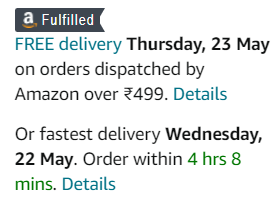
Free shipping is a major deciding factor for many online shoppers. Offering free shipping can significantly incentivize customers to complete their purchases and increase your average order value.
- Clear communication: Clearly communicate your free shipping policy and minimum order value required to qualify. Don’t bury this information in fine print; make it easy for customers to find.
- Strategic options: Consider offering tiered shipping options based on order value or delivery speed. This gives customers more flexibility and potentially encourages them to spend more to reach the free shipping threshold.
Remember: Free shipping doesn’t have to eat into your profits. Factor in the cost when setting your product prices and consider offering free shipping only above a certain order value.
10. Reeling Them Back In: The Power of Cart Abandonment Emails
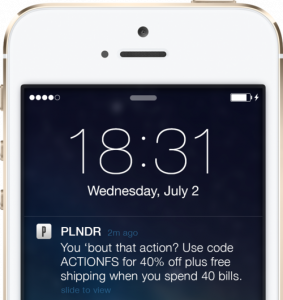
Did you know that according to Statista, the average cart abandonment rate for online shopping carts sits around 69.82% in 2023? That’s a staggering number! Cart abandonment emails offer a powerful opportunity to recapture lost sales and remind customers about the items left lingering in their virtual shopping bags.
- Timely intervention: Send a cart abandonment email within 24 hours of a customer abandoning their cart. This gentle nudge can reignite their interest before they forget about their purchase entirely.
- Personalized touch: Personalize your cart abandonment emails with the customer’s name and a reminder of the specific items they left behind. This adds a human touch and increases the email’s effectiveness.
- Offer an incentive: Consider including a discount code or free shipping offer in your cart abandonment email. This extra incentive can be the push a customer needs to complete their purchase.
By implementing a strategic cart abandonment email campaign, you can significantly reduce cart abandonment rates and recover lost sales.
11. Shine a Spotlight: Featuring High-Selling Products
Don’t leave your best-selling products hidden in the shadows! Highlighting high-converting or high-margin products on your website can significantly boost sales.
- Prime real estate: Feature your top-selling items prominently on your homepage and product category pages. This increases the chances of customers seeing and clicking on them.
- Compelling calls to action: Don’t just list the products; use clear and action-oriented calls to action like “Shop Now” or “Add to Cart” to encourage immediate purchases.
- A/B testing is key: Test different product placements and layouts to see what resonates best with your audience. This data-driven approach helps you optimize your website for maximum sales potential.
By featuring your high-performing products, you’re capitalizing on what’s already working and attracting more customers to your bestsellers.
12. The Voice of the Customer: Leveraging Customer Reviews with Images
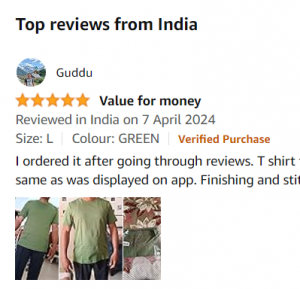
Customer reviews are a goldmine of social proof. Studies by BrightLocal show that 88% of consumers read online reviews before making a purchase decision. Displaying customer reviews with images on your product pages builds trust, increases conversion rates, and offers valuable insights to potential buyers.
- Encourage reviews: Actively encourage customers to leave reviews after they’ve purchased from you. Offer incentives like loyalty points or discounts for participating.
- Showcase a variety: Display a mix of positive and negative reviews. Addressing negative reviews professionally shows you care about customer feedback.
- Visual storytelling: Allow customers to upload photos with their reviews. Seeing real people using and enjoying your products can significantly impact buying decisions.
By incorporating customer reviews with images, you’re leveraging the power of social proof to build trust and encourage customers to take the leap and buy.
13. Prime Real Estate: Organizing Your Homepage for Success
Your website homepage is prime real estate. It’s your chance to make a great first impression and capture the attention of potential customers. Organizing your homepage with high-profit and high-converting products can significantly boost sales.

- Hero products on display: Feature high-profit and high-converting products prominently on your homepage. This could be your best-sellers, new arrivals, or products with exceptional customer reviews.
- Compelling visuals: Utilize high-quality images and clear calls to action to entice visitors to click and learn more about your featured products.
- Cater to browsing preferences: Consider offering different browsing options on your homepage, such as product categories, curated collections, or seasonal promotions. This caters to diverse customer preferences and keeps visitors engaged.
By strategically organizing your homepage with high-performing products, you’re maximizing the potential to convert website visitors into paying customers.
14. A World of Savings: Creating a Dedicated Coupon Page
Coupons and discounts are a time-tested way to incentivize purchases and attract new customers. A dedicated coupon page makes it easy for customers to find and redeem these offers.
- Variety is key: Offer a variety of coupons and discounts targeted towards different customer segments. This could include welcome discounts for new customers, loyalty programs for returning customers, or special promotions for high-value purchases.
- Clarity matters: Clearly display coupon codes, expiry dates, and any restrictions associated with the offer. Don’t leave your customers hunting for the details.
- Easy access: Make your coupon page easily accessible from your website navigation bar or include it in your email marketing campaigns.
By creating a dedicated coupon page, you’re providing a centralized location for customers to discover savings opportunities and incentivize them to take advantage of your promotional offers.
15. Bridging the Gap: Making Contact with Your Support Team Easy
A seamless customer experience is crucial for ecommerce success. Making it easy for customers to contact your support team demonstrates your commitment to resolving inquiries and building trust.
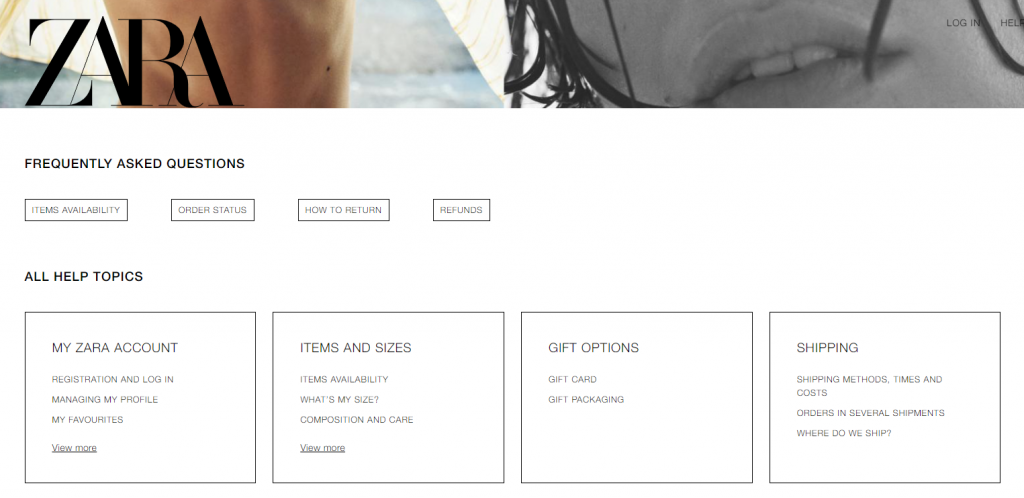
- Multiple channels: Offer a variety of contact options, such as live chat, email, and phone support. This caters to different customer preferences and ensures everyone can reach your team easily.
- Visible and accessible: Make your contact information readily available on every page of your website. Don’t bury it in a hard-to-find location.
- Fast response times: Aim for fast response times to customer inquiries. The quicker you address their concerns, the more satisfied they’ll be.
By providing multiple and accessible contact options, you’re fostering a sense of transparency and building trust with your customers.
16. Thinking Globally, Acting Locally: Preferred Payment Options Based on Location
In today’s globalized online marketplace, catering to your international customer base is essential. Offering preferred payment options based on location can significantly improve conversion rates.
- Research is key: Research popular payment methods in the regions you ship to. This could include digital wallets, local bank transfers, or cash on delivery options.
- Multiple gateways: Integrate multiple payment gateways to offer a variety of payment options for your international customers. This flexibility makes the checkout process smoother and removes potential barriers to purchase.
- Dynamic options: Consider displaying payment options based on the customer’s location. This ensures they see the most relevant and familiar payment methods for their region.
By offering preferred payment options based on location, you’re demonstrating your commitment to a global audience and removing any obstacles that could prevent international customers from completing their purchases.
Sell globally with Printchester’s shipping services. Learn more.
17. Anchoring Attention: The Power of Anchor Pricing
Anchor pricing is a psychological pricing strategy that utilizes a higher-priced reference point to make a lower-priced option appear more appealing.
- Strategic placement: Consider placing a higher-priced product alongside a similar, but slightly lower-priced option. This makes the lower-priced item seem like a better deal in comparison.
- Limited-time offers: Anchor pricing can be particularly effective with limited-time offers on the higher-priced option. This creates a sense of urgency and incentivizes customers to choose the lower-priced item before the offer expires.
- Test and refine: A/B test different anchor pricing strategies to see what resonates best with your target audience. This data-driven approach allows you to optimize your pricing strategy for maximum impact.
By using anchor pricing effectively, you can subtly influence customer perception of value and nudge them towards purchasing your desired products.
18. Harnessing the Power of AI: Summarizing Customer Reviews
The sheer volume of customer reviews can be overwhelming for both customers and businesses. Here’s where Artificial Intelligence (AI) steps in. AI-powered tools can analyze vast amounts of customer reviews and generate concise summaries highlighting key themes and sentiment.

- Identify trends: Use AI summaries to identify recurring themes and concerns within customer reviews. This allows you to address common pain points and improve your products or services.
- Prioritize actionable feedback: AI summaries can help prioritize the most relevant and actionable feedback from customer reviews. This allows you to focus your efforts on areas with the greatest potential for improvement.
- Maintain authenticity: Remember, AI summaries are just a starting point. It’s still crucial to read through a selection of actual reviews to capture the nuances of customer feedback.
By leveraging AI to summarize customer reviews, you can gain valuable insights from your customer base and use them to continuously improve your offerings.
19. Personalizing the Path to Purchase: Leveraging Customer Data
In today’s data-driven world, personalization is no longer a luxury; it’s an expectation. By utilizing customer data and browsing behavior, you can tailor the shopping experience to each individual visitor, significantly increasing engagement and conversion rates.
- Recommend with relevance: Use customer data to recommend products based on past purchases or browsing history. This showcases your understanding of their needs and preferences, making them feel valued.
- Dynamic product displays: Personalize product displays on your homepage and category pages based on user data. This ensures visitors see products they’re most likely interested in, saving them time and effort.
- Segmented email marketing: Segment your email marketing list based on demographics, purchase history, or interests. This allows you to send targeted email campaigns with personalized offers and promotions that resonate more effectively with each customer segment.
By personalizing the shopping experience, you’re building stronger customer relationships and making the buying process feel more convenient and relevant, ultimately leading to more sales.
20. Retargeting Ads: Rekindling Lost Interest
Let’s face it, website visitors don’t always convert on the first visit. Retargeting ads offer a powerful way to reconnect with those who haven’t completed a purchase and remind them about the products they viewed.
- Strategic targeting: Target website visitors with ads that showcase the specific products they viewed or similar items. This personalized approach is more likely to capture their attention.
- Offer a limited-time incentive: Consider including a limited-time discount or free shipping offer in your retargeting ads. This can incentivize hesitant shoppers to take the plunge and complete their purchase.

- Track and analyze: Monitor the performance of your retargeting campaigns and adjust your targeting strategy or ad creatives based on the data. This ensures you’re reaching the right audience with the most effective message.
By employing strategic retargeting ads, you can recapture lost interest and turn those window shoppers into paying customers.
21. Social Proof Beyond Reviews: Building Trust and Credibility
Customer reviews are a valuable source of social proof, but there’s more to the story. Integrate additional elements to showcase your brand credibility and build trust with potential customers.
- Social media integration: Embed social media feeds on your product pages or website to show how customers are interacting with your brand on platforms like Instagram or Facebook. This creates a sense of community and authenticity.
- Influencer partnerships: Collaborate with relevant influencers in your niche to promote your products. Their endorsement can reach a wider audience and build trust with potential customers who follow them.
- Trusted partner logos: Display logos of trusted partners, payment processors, or security companies on your website. This reassures customers that their information is secure and that you value working with reputable businesses.
By showcasing social proof beyond just reviews, you’re building a more well-rounded picture of trust and credibility for your brand, encouraging customers to feel confident about making a purchase.
22. Live Chat Support: Real-Time Engagement and Problem Solving
Beyond traditional email and phone support, consider offering live chat support for real-time customer interaction. This can be a game-changer for improving customer satisfaction and boosting sales.
- Proactive engagement: Train your live chat support staff to proactively engage with website visitors who may have questions or require assistance.
- Quick resolution: Aim for fast response times and efficient problem-solving through live chat. This demonstrates your commitment to customer satisfaction and can prevent potential purchase abandonment.
- Integrate with chatbots: Consider integrating chatbots for basic inquiries or to qualify leads before connecting them with a live support representative. This can streamline the customer service process.
By offering live chat support, you’re providing a convenient and immediate way for customers to get help, ultimately leading to a more positive shopping experience and increased sales potential.
23. SEO: Organic Visibility and Growth
Don’t underestimate the power of organic search engine optimization (SEO). Optimizing your product pages and website content for relevant keywords can significantly improve your ranking in search results.
- Keyword research: Conduct thorough keyword research to identify relevant search terms that potential customers might use when looking for products like yours.
- On-page optimization: Optimize your product pages with relevant keywords in titles, descriptions, and image alt tags. This improves search engine visibility and user experience.Create high-quality, informative product descriptions that not only include keywords but also engage potential customers.
- Content marketing: Develop a content marketing strategy that includes blog posts, articles, or infographics related to your products and target audience. This establishes you as a thought leader and attracts organic traffic through search engines.
- Track and analyze: Monitor your website’s SEO performance using analytics tools. This allows you to identify areas for improvement and refine your SEO strategy for long-term organic growth.
By implementing a well-rounded SEO strategy, you’ll increase your website’s organic visibility, attract qualified traffic, and ultimately convert more visitors into paying customers.
24. Building a Mobile App: A Strategic Extension of Your Brand
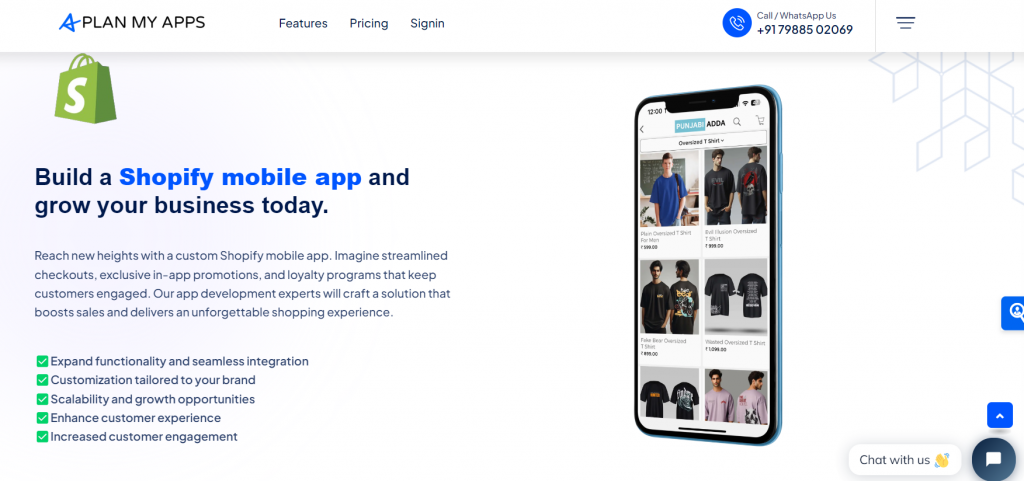
While a mobile app can be fantastic for ecommerce, consider it as an extension of your overall brand experience. Here’s how it goes beyond just product sales:
- Content Hub: Integrate a content section within your app featuring blog posts, articles, or video tutorials related to your industry. This positions you as a thought leader and keeps users engaged beyond shopping.
- Loyalty Programs: Implement a loyalty program within your app to reward repeat customers. This could involve points for purchases, exclusive discounts, or early access to new products.
- Omnichannel Experience: Ensure a seamless experience between your app, website, and social media presence. Customers should be able to easily switch between platforms and continue their shopping journey effortlessly.
Ecommerce Killers: Mistakes to Avoid for Booming Sales
1. Pop-Up Pestilence: The Annoyance of Intrusive Ads
While pop-up ads can be a marketing tool, using them excessively can be a major turn-off for potential customers.
- Disruption and Frustration: Frequent pop-ups interrupt the browsing experience and can lead to customer frustration. This can cause them to abandon their cart or leave your website altogether.
- Negative Brand Perception: Overly promotional pop-ups can create a perception that your brand is desperate or spammy. This undermines trust and discourages customers from returning.
- Missed Targeting Opportunities: Generic pop-ups fail to personalize the customer experience. Targeted pop-ups based on browsing behavior or purchase history can be more effective.
Do this instead:
- Strategic Pop-Up Placement: Consider using pop-ups strategically, such as offering a discount code upon exit intent or promoting a new product launch.
- Timely Delivery: Don’t bombard customers with pop-ups as soon as they enter your website. Allow them time to browse and consider products before presenting an offer.
- Exit-Intent Pop-Ups: Utilize exit-intent pop-ups to incentivize customers who are about to leave your website. Offer a discount code or free shipping to encourage them to complete their purchase.
By using pop-ups strategically, sparingly, and with a focus on value proposition, you can avoid annoying customers and potentially recapture lost sales.
2. Stock Photos Gone Wrong: The Pitfalls of Generic Imagery
While adding stock photos might seem like a quick and easy solution, relying solely on generic, AI-generated images can backfire. Here’s why:
- Lack of Authenticity: Generic photos fail to capture the unique essence of your brand or products. Customers crave authenticity and visual storytelling.
- Misrepresentation of Quality: Stock photos don’t always accurately depict the quality or details of your products. This can lead to customer disappointment and returns.
- Missed Opportunity for Differentiation: High-quality, custom product photos are a chance to stand out from competitors. Showcase your products in a visually appealing way that reflects your brand identity.
Do this instead:
- Invest in Professional Photography: Consider hiring a professional photographer to capture high-quality images of your products. This ensures they are well-lit, clear, and showcase key details.
- Showcase Products in Action: Go beyond static product shots. Include lifestyle images that demonstrate how your products can be used in everyday life.
- User-Generated Content (UGC) Power: Encourage customers to share photos and videos using your products. UGC adds authenticity and social proof, influencing buying decisions.
By prioritizing high-quality, unique product visuals, you’ll create a more engaging and trustworthy online shopping experience for your customers.
3. Attention Overload: The Problem with Product Page Clutter
Your product pages are prime real estate. However, cramming them with too many distracting elements can overwhelm potential customers and hinder sales.
- Information Overload: Present key product information in a clear and concise format. Bullet points, easy-to-read fonts, and clear headings make it easier for customers to find what they need.
- Complicated Navigation: Ensure your product pages have a clean and user-friendly layout. Intuitive navigation allows customers to zoom in on product details, add to cart, or find related items without getting lost.
- Unnecessary Pop-Ups: Avoid pop-ups that appear immediately upon entering a product page. This disrupts the browsing experience and can lead to customer frustration.
Do this instead:
- Focus on Product Highlights: Prioritize product information that matters most to your customers, such as features, benefits, specifications, and sizing charts.
- High-Quality Visuals Take Center Stage: Let high-quality product photos and videos be the hero of your product pages. Visuals should be clear, well-lit, and showcase the product from multiple angles.
- Strategic Calls to Action: Include clear and concise calls to action (CTAs) on your product pages, such as “Add to Cart” or “Buy Now.” Make it easy for customers to take the next step in the purchasing process.
By creating clean, organized, and visually appealing product pages, you’ll guide customers on a smooth buying journey and ultimately increase your conversion rates.
4. Ignoring Mobile Optimization
In today’s mobile-first world, a website that’s not optimized for smartphones and tablets is a major conversion killer. Customers increasingly shop on their phones, so a smooth mobile experience is essential.
Solution:
- Responsive Design: Ensure your website utilizes responsive design principles. This means the website layout automatically adjusts to different screen sizes, providing an optimal experience on desktops, tablets, and smartphones.
- Mobile-Friendly Navigation: Make sure your website navigation is easy to use on a mobile touch screen. Buttons should be large enough to tap easily, and menus should be collapsible or condensed for smaller screens.
- Fast Loading Speeds: Prioritize website speed optimization. Slow loading times can significantly hurt conversions on mobile devices where data connections might be slower.
By creating a mobile-friendly website, you’ll cater to the ever-growing mobile audience and ensure a seamless shopping experience for all your customers.
5. The Review Rubdown: Why Neglecting Customer Reviews is a Mistake
Customer reviews are a powerful form of social proof that can significantly influence buying decisions. Positive reviews build trust and credibility, while negative reviews can act as a red flag for potential customers.
Solution:
- Encourage Reviews: Actively encourage customers to leave reviews after they’ve purchased products. Offer incentives like discounts or loyalty points for submitting reviews.
- Display Reviews Prominently: Showcase customer reviews prominently on your product pages. This allows potential customers to see what others think about the products they’re considering.
- Address Reviews Professionally: Take the time to respond to both positive and negative reviews. Thank customers for positive feedback and address negative reviews in a professional and helpful manner. This demonstrates that you care about customer feedback and are committed to improvement.
By embracing customer reviews and using them strategically, you can build trust, improve brand perception, and ultimately boost sales.
6. Shipping in the Shadows: The Problem with Opaque Shipping Costs
Unclear or hidden shipping costs are a major source of frustration for customers. Imagine finding the perfect product online, only to discover during checkout that exorbitant shipping fees apply. This can lead to cart abandonment and lost sales.
Solution:
- Transparent Shipping Costs: Be upfront about shipping costs from the very beginning. Display estimated shipping costs on product pages and during checkout.
- Multiple Shipping Options: Offer a variety of shipping options to cater to different needs and budgets. This could include standard shipping, expedited shipping, or free shipping above a certain order value.
- Shipping Cost Calculator: Consider implementing a shipping cost calculator that allows customers to estimate shipping costs based on their location and desired delivery speed.
By providing clear and transparent shipping information, you’ll avoid surprises at checkout and build trust with your customers.
7. Lack of Clear Return Policy Hurts Sales
A clear and concise return policy builds trust with potential customers. Imagine being unsure about a product’s fit or functionality – a confusing or restrictive return policy can deter a purchase altogether.
Solution:
- Dedicated Returns Page: Create a dedicated returns page on your website that clearly outlines your return policy. Include information such as the return window (how long customers have to return an item), the return process (steps involved in initiating a return), and any associated fees (restocking fees or return shipping costs).
- Easy-to-Find Return Policy: Ensure your return policy is easily accessible from all product pages and your website navigation. This allows customers to find the information they need quickly and confidently.
- Be Fair and Reasonable: Strive to have a fair and reasonable return policy. This demonstrates customer focus and builds trust. Consider offering free returns within a specific timeframe to incentivize purchases.
By implementing a clear and customer-friendly return policy, you’ll alleviate customer concerns, encourage purchases, and potentially recover lost sales through exchanges.
8. Security Sham: The Danger of an Insecure Checkout Process
A secure checkout process is essential for building customer trust and protecting sensitive information. If a customer feels their credit card details or personal information might be at risk, they’ll likely abandon their cart and shop elsewhere.
Solution:
- HTTPS Encryption: Ensure your website uses HTTPS encryption, signified by the lock icon in the address bar. This encrypts data transmission between your website and the customer’s browser, safeguarding sensitive information.
- Trust Signals: Display trust signals on your website, such as security badges from reputable organizations like Verisign or McAfee. This reassures customers that their information is protected.
- Secure Payment Gateways: Partner with secure and reliable payment gateways to process customer transactions. Popular options include PayPal, Stripe, or Amazon Pay. These platforms offer robust security measures and fraud protection.
By prioritizing a secure checkout process, you’ll create a safe environment for customers to complete their purchases and build trust in your brand.
9. The Silent Treatment: Ineffective Customer Service
Responsive and helpful customer service is crucial for building customer loyalty. Imagine having a question about a product or encountering an issue with your order, only to be met with slow or unhelpful customer support. This can leave a negative impression and damage brand perception.
Solution:
- Multiple Support Channels: Offer multiple channels for customer support, such as email, phone, and live chat. This allows customers to choose their preferred method of communication.
- Prompt Responses: Strive to respond to customer inquiries promptly. Set clear expectations for response times and aim to exceed them whenever possible.
- Knowledgeable Staff: Ensure your customer support team is knowledgeable about your products, policies, and procedures. This allows them to resolve customer issues efficiently.
- Empathetic Approach: Train your customer support team to adopt an empathetic and helpful approach. Listen to customer concerns, acknowledge their frustrations, and work towards solutions.
By prioritizing excellent customer service, you’ll build trust, foster positive brand experiences, and encourage repeat business.
10. Brand Inconsistency: The Confusion of a Disjointed Brand Identity
Your brand identity should be consistent across all touchpoints, including your website, product packaging, marketing materials, and social media presence. Imagine encountering a brand with a sleek, modern website but receiving a product packaged in a generic box with a different logo. This creates confusion and undermines brand recognition.
Solution:
- Brand Guidelines: Develop clear brand guidelines that outline your brand identity, logo usage, color palette, fonts, and messaging style. Ensure all marketing materials and customer touchpoints adhere to these guidelines.
- Cohesive Visual Identity: Maintain a consistent visual identity across all platforms. This includes using the same logo, color scheme, and design elements throughout your website, social media profiles, and marketing materials.
- Clear Brand Messaging: Develop clear and concise brand messaging that resonates with your target audience. This messaging should be consistent across all communication channels.
By maintaining a consistent brand identity, you’ll build brand recognition, create a memorable customer experience, and differentiate yourself from competitors.
11. Data Darkness: Why Ignoring Analytics Hinders Growth
Data is your friend in ecommerce! Website analytics tools track customer behavior on your website, providing valuable insights into user journeys, conversion rates, and areas for improvement. Imagine operating blindly without understanding how customers interact with your website.
Solution:
- Analytics Tools: Utilize website analytics tools like Google Analytics to track key metrics such as website traffic, user behavior, and conversion rates.
- Data-Driven Decisions: Use the data gathered from your analytics tools to make informed decisions about your website design, product offerings, marketing campaigns, and overall ecommerce strategy.
- A/B Testing: Implement A/B testing to compare different versions of your website elements or marketing materials and see which ones perform better.
By embracing data and analytics, you can gain valuable insights into customer behavior and continuously optimize your ecommerce store for better performance and growth.
Start your Ecommerce store with Printchester
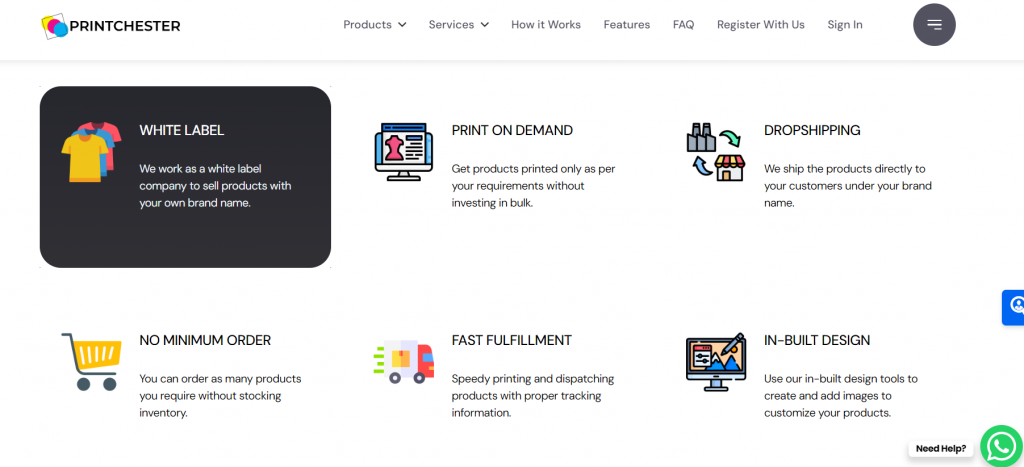
1. Sign Up (Free): Head to Printchester’s website and sign up for their free plan (if available). This allows you to test things out before committing.
3. Sell It: Set up your online store on eCommerce platforms like Shopify and Woocommerce. You can add product descriptions, pricing (including printing costs), and images.
4. Promote It Yourself: Focus on ways to promote your store. Share it on social media, run ads and contests, or engage in relevant online communities.
Conclusion
In conclusion, by incorporating these additional strategies alongside the ones covered previously, you’ll equip yourself with a powerful arsenal to boost your ecommerce sales in 2024 and beyond.
Remember, the key lies in understanding your target audience, creating a seamless customer experience, and continuously optimizing your approach based on data and customer feedback. So, go forth and conquer the ever-evolving world of ecommerce!
